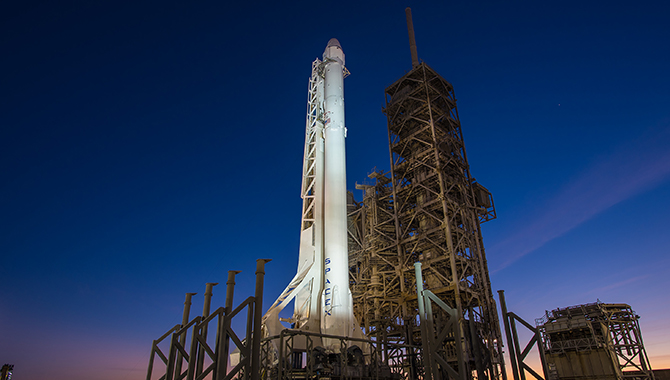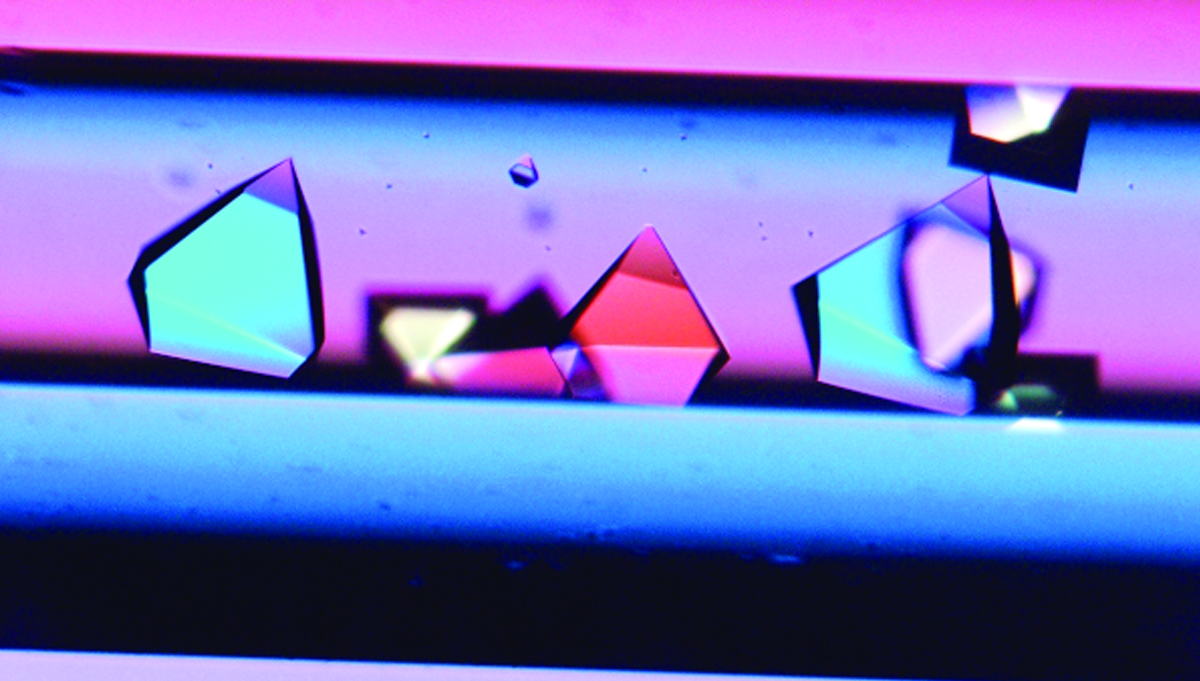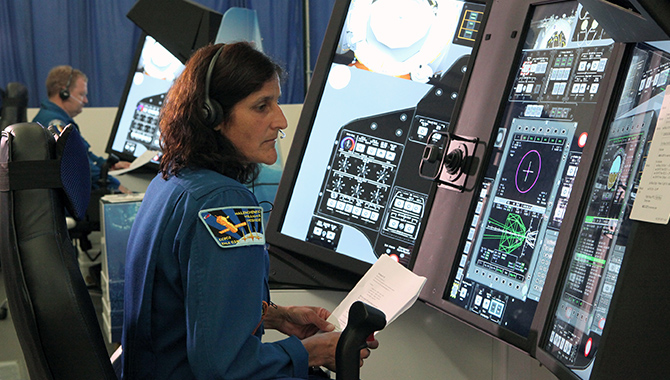
The Soyuz MS-24 crew ship is pictured docked to the International Space Station’s Rassvet module. NASA is making plans to deorbit the ISS into a remote ocean location sometime after 2030. Credit: NASA
Powerful new spacecraft under development will guide the venerable station through Earth’s atmosphere to a remote ocean site, sometime after 2030.
The International Space Station is one of the brightest objects in the sky, easily visible by looking up at dusk or dawn. What people see, depends to some extent on who is looking.
Some see it as an engineering marvel, about the length of a football field, weighing nearly 1 billion pounds, and completing an orbit of Earth every 90 minutes at 17,500 miles per hour. Assembled from components manufactured to exacting standards in far-flung locations, it was joined together for the first time in space—an enormous technical challenge.
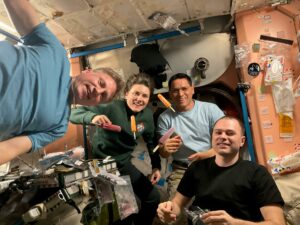
Four Expedition 68 crewmates join each other for a meal inside the International Space Station’s Harmony module. From left are, Commander Sergey Prokopyev and Flight Engineer Anna Kikina, both from Roscosmos, NASA Flight Engineer Frank Rubio, and Roscosmos Flight Engineer Dmitri Petelin. Credit: NASA
Others see it as the pinnacle of international cooperation, an unprecedented partnership of space agencies— NASA, Roscosmos, the European Space Agency, the Japan Aerospace Exploration Agency, and the Canadian Space Agency —coming together to provide the components of ISS and oversee its operations for decades in the most complex space exploration program ever undertaken.
Still others see a leading research laboratory, capitalizing on the unique behavior of materials in the microgravity environment of Low Earth Orbit (LEO) to drive breakthroughs in cancer treatments, tissue generation, Bose-Einstein condensate research, cosmic particle analysis, 3D printing, and more.
“Depending on what you’re most interested in, people tend to see different things about ISS that are interesting to them,” said Ken Bowersox, NASA Associate Administrator for Space Operations, speaking at a recent media teleconference.
The first two segments of the ISS—the U.S. built Unity Node 1 and the Russian Zarya module—were joined together 25 years ago, during space shuttle mission STS-88. It has been continuously occupied since November 2000.
“I believe we’ll have work to do in LEO for a long time into the future. It’s just the most cost-effective place to work in microgravity. It’s close to home. We can get a lot done for the resources we invest. I see a reason to be in LEO for a very, very long time,” Bowersox said. “But 25 years is a long time and we’re getting to the point where we need to think about what comes after ISS. And to prepare for that, we need to plan for how we end the ISS program.”

This image of the International Space Station (ISS) was photographed by one of the crewmembers of the STS-112 mission following separation from the Space Shuttle Orbiter Atlantis as the orbiter pulled away from the ISS in 2002. Credit: NASA
At least six private space stations are in some stage of planning or development, with targeted launch dates later this decade or in the early 2030s. Many of these planned stations will support commercial scientific research. Some of the developers also hope to create a destination for commercial space tourism.
NASA has committed to extend operations at ISS through 2030 and weighed several options, including boosting it to a higher orbit or disassembling it and returning the pieces to Earth, before choosing to deorbit it with the assistance of a purpose-built spacecraft.
“The program has looked at lots of different options,” Bowersox said. “Especially the raising option is one where you have to have all the data to really understand it. The thing that surprised me is the orbital debris environment makes raising it problematic. We could actually make the orbital environment a lot worse because of impacts up at that higher altitude, increasing the amount of debris … that [comes down] eventually to a lower altitude. So again, the responsible thing we believe right now is … to bring ISS home all in one piece.”
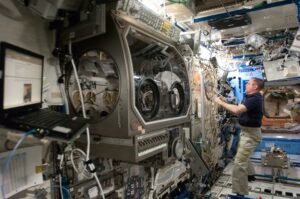
NASA astronaut Kevin Ford, Expedition 34 commander, works in the Destiny laboratory of the International Space Station in 2013. Credit: NASA
NASA recently announced it had selected a proposal by SpaceX to develop what is known as the U.S. Deorbit Vehicle. The vehicle’s main purpose is to dock at Node 2 of the U.S. Orbital Segment and eventually perform a series of burns over the last week that ISS is in space, guiding it to a safe landing in a remote ocean location.
“One thing to keep in mind is, with any new vehicle development, it can be pretty complex and sometimes it can take a bit longer than what you expect,” said Dana Weigel, NASA’s International Space Station Program Manager, speaking at the teleconference. “Historically, vehicles of this level of complexity could take five to eight years to develop. And so, we thought it was really important that we start now.”
SpaceX’s design for the U.S. Deorbit Vehicle uses a modified Dragon spacecraft with a larger, more powerful “trunk” to accommodate extra fuel and 46 Draco thrusters instead of the 16 for the standard Cargo Dragon. Between 22 and 26 of the thrusters will be firing at a given time to deliver about 10,000 Newtons of thrust during the deorbit, according to Sarah Walker, SpaceX’s director of Dragon mission management, who spoke at the teleconference.
“The thing that I think is most complex and challenging is that this burn must be powerful enough to fly the entire space station, all the while resisting the torques and forces caused by increasing atmospheric drag on the space station to ensure that it ultimately terminates in the intended … unpopulated ocean area so that any elements that could survive atmospheric reentry pose no risk to the public,” Walker said.

In 2014, NASA astronaut Reid Wiseman, Expedition 41 flight engineer, participated in a session of extravehicular activity (EVA) as work continued on the International Space Station. During the six-hour, 13-minute spacewalk, Wiseman and European Space Agency astronaut Alexander Gerst (out of frame), flight engineer, worked outside the space station’s Quest airlock relocating a failed cooling pump to external stowage and installing gear that provides back up power to external robotics equipment. Credit: NASA/Alex Gerst
“To achieve this, the deorbit vehicle will need six times the usable propellant, and three to four times the power generation of today’s Dragon spacecraft, just for scale. It needs enough fuel on board, not just to complete the primary mission, but also to operate on orbit in partnership with the Space Station for about 18 months,” Walker added.
In the meantime, the ISS will remain an engineering marvel, pinnacle of international cooperation, and leading research laboratory for years to come.
“Station continues to be a very busy place and it’s fully utilized. We have a dynamic activity about every week to week and a half, so something like a visiting vehicle, docking or undocking, spacewalk robotics, a lot of busy dynamic activities,” Weigel said. “In addition to that, we keep the crew fully subscribed, conducting world-renowned research with hundreds of investigations that span across the globe. We do plan to continue fully operating station through the end of its life.”






